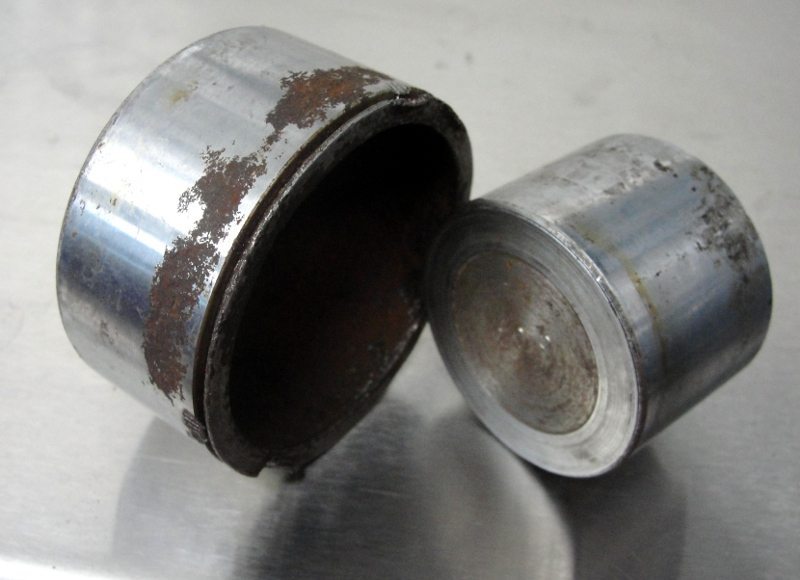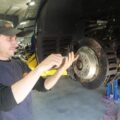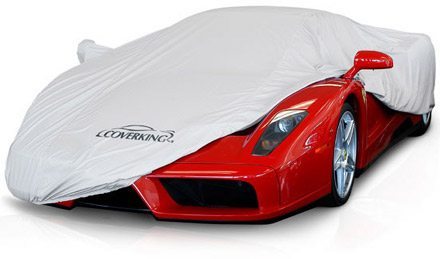Mechanical Safety Inspection
We strongly recommend performing a mechanical safety inspection of your Ferrari (or any vehicle) before going on a long club drive, rally or extended road trip. At a minimum, annually check your Ferrari thoroughly for road trip readiness and to prevent damage to car systems due to low use or prolonged storage.
Fluids
• Engine oil: Check oil level and the oil change due date. Change engine oil before a long road trip if you’re close to the due date to protect your engine. Check your owner’s manual for recommended motor oil types.
• Transmission and differential fluids: Check your owner’s manual for fluid change intervals which are quite a bit longer than for engine oil. While your service center tech is under the car changing manual transmission oil and the differential oil, have them lubricate the drive-shaft U-joints and other grease points
.• Engine coolant:. Always check that the coolant reservoir is topped up.
Don’t mix coolant types Not all coolants are the same – don’t mix them! You must check your owner’s manual for the recommended coolant, there are numerous types. Be sure to use the same coolant type as is already in the engine. If the coolant in the reservoir and the radiator is cloudy, murky, it’s well past time for a change.
Belts and Hoses
• Hoses: Rubber hoses deteriorate over time. Check them for bulges, blisters or squishiness (not good) which indicate weak hose walls. If hoses are cracked or blistered, replace them.
• Belts: Check the engine accessory belts for wear. If belts are torn, cracked or showing the fiber cords, replace with new belts. A loose belt will cause loud screeching noise. If your finger can depress the belt more than a half-inch of deflection at a point halfway between pulleys the belt is stretched. If it’s old and worn, replace it. If the belt is not worn out, it should be re-tensioned or it may fall off. On newer cars, if your car has less than 50,000 miles, the serpentine belt is probably ok but check the owners manual because they also need to be replaced at time intervals whether they seem worn or not. If your car has cam belts (timing belts) make sure they are less than 5 years old.
Tires
• Tires: pressure: Know your recommended tire pressures. Consult your owner’s manual or check on the driver’s side door. Check tire pressure before you leave with a good gauge. Low tire pressures cause the tires to run hotter from the extra friction. It also wastes fuel. If a tire is not holding pressure, it has a leak and likely may blow out soon. Check for any bubbles or cracks in the tire walls and get a new tire if you spot a problem.
Tire date codes: Rubber tires begin to deteriorate and fall apart after 5 years, whether or not there is tread on them. Learn how to read the manufacturers date codes on your tires and replace before 5 years.
Tire wear: Check the tread on all four tires for uneven wear. If the tire tread-depth is less than 2/32” buy new tires. You can use an inexpensive tire tread gauge or in a pinch use a penny. If the depth is below Lincoln’s chin line, it’s time to change.
Brake System
• Brake system: Brake fluid over time attracts and absorbs moisture and will corrode your brake components internally. Check your brake reservoir for clear amber colored fluid, and make sure that it is topped up. If you haven’t had a flush in a year get it done before your trip. The less you drive a car the more important brake fluid changes become. Water-laden old brake fluid also lowers the fluid’s boiling point. A lowered boiling point can lead to a squishy brake pedal.
Charging System
• Battery: Check that the terminals are corrosion-free and the positive and negative leads are tight. If there is corrosion – white chalky stuff on the terminals – clean it off with a wire brush. Tighten the battery leads. If one falls off while driving, it can cause a “voltage dump” that could ruin the alternator. If the starter sounds sluggish, it could be terminal corrosion or a failing battery.
• Finally, road test the vehicle before your trip: Take a quick drive at speed and listen for noises. Be alert for vibration and poor handling and watch for inoperative gauges or gauge warnings. Any noise at the wheel could signal a defective worn out wheel bearing or a worn CV joint. Pulling to the side may indicate an under-inflated tire, worn tires, a slipped tire belt or possible alignment problem. Defective brake rotors or worn brake pads can cause your car to shimmy or squeal while braking. A soft brake pedal may indicate a hydraulic leak or bad brake fluid. Check that all exterior lights function. Headlights that flicker at idle may be caused by a loose alternator belt, a failing alternator or corroded battery terminals. Make sure air intake openings in the body are not obstructed with leaves and debris which could cause overheating.






